Weather Data for Agriculture

Available agricultural weather elements

Soil Temperature
The temperature of the soil at various depths from surface level to 2 meters

Soil Moisture
The moisture level contained in the soil at various depths up to 2 meters

Evapotranspiration
The amount of moisture that will be evaporated based on the weather conditions

Growing Degree Days (GDD)
The total heat or warmth a location has experienced during the season

DeltaT
The wet bulb depression indicating evaporation rate for planning crop spraying
Primary areas of agricultural weather
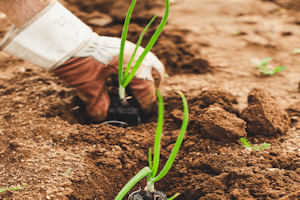
Planting
Intelligent use of weather data is critical to making informed decisions about the best time to plant crops based on factors such as temperature, precipitation, soil moisture, and soil temperature. The timing of planting can greatly impact crop yield and the overall success of any farming operation. By utilizing weather data such as soil temperature, moisture, heat and degree days, farmers can increase the chances of a successful crop yield and reduce the risk of crop failure.
Weather data is also a key factor in deciding which crops to plant. Different crops have different temperature and moisture requirements, and weather data provides valuable information on these factors. By analyzing weather patterns and trends, farmers can determine which crops are most likely to thrive in their area and make informed decisions about crop selection. These informed choices increase the efficiency and sustainability of farming operations.
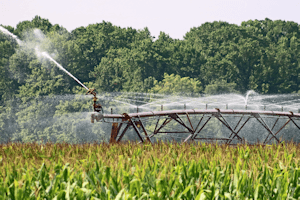
Crop Care
Weather data is also essential in caring for agricultural crops. Farmers can use weather data to monitor and adjust irrigation schedules, fertilizer applications, and pest control measures. Soil moisture and evapotranspiration impact the amount of water crops need, and farmers can use weather data to adjust their irrigation schedules appropriately. Fertilizer applications can be timed based on weather patterns, as heavy rainfall often washes away nutrients from the soil, while drought conditions may require more frequent applications.
Additionally, weather data can help farmers predict and manage pest infestations, as certain pests thrive in specific temperature and moisture conditions. Pests also follow specific weather-based phenological patterns that they find most suitable for breading and growth. For example, certain pests cycles are highly predicable by monitoring GDD. Properly timing pest control applications is critical and can greatly improve harvest.
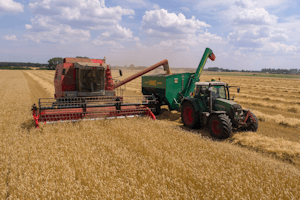
Harvesting
Farmers use weather data to track key conditions such as temperature and soil moisture levels during the growing season, which helps to determine the ideal time to harvest crops. Tracking temperature levels throughout the growing season can help predict crop maturity, and farmers can determine the best time to harvest their crops, resulting in a higher quality product with a longer shelf life.
Weather data can also help farmers plan for the logistics of crop harvesting. Since harvesting is a labor-intensive process that requires a significant amount of time and resources, farmers can use weather forecast data along with climate averages to help plan for the optimal time to harvest. If conditions such as rainstorms are predicted, farmers can adjust their harvesting schedule to ensure that the crop is not damaged by the rain. Additionally, weather data can help farmers plan for post-harvest activities such as drying or curing, as air moisture levels and temperature can affect the quality of the final product.
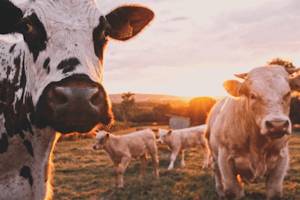
Livestock Care
Livestock animals are highly susceptible to temperature extremes, and weather data can help farmers and ranchers manage conditions to ensure the wellbeing of their animals. In hot weather, farmers can monitor the heat index and determine when it is necessary to provide their animals with additional shelter and cooling options. By using weather data to manage livestock care, farmers can ensure the health and wellbeing of their animals and prevent costly losses due to extreme weather conditions.
Weather data can also be used to improve the productivity of livestock operations. Farmers can use weather data to predict and manage feed and water requirements for their animals. During hot weather, animals require more water to maintain their hydration levels, and farmers can use current and forecast weather data to ensure that their water sources are providing optimal supply. Healthy animals with proper weights are a key requirement to ensure the profitability and sustainability of livestock operations.
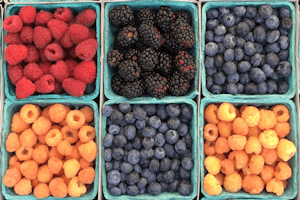
Commercialization
Farmers and traders use weather data to optimize bringing crops and livestock to market. They can use a combination of weather data such as temperature and precipitation along with tracking market demand to determine the optimal time to sell. Commodity traders can use weather patterns to predict values, buy harvests and to determine the most profitable time to sell stored crops in the marketplace. By using weather data to optimize their timing, agriculture professionals can ensure that their products are of the highest quality and command the best market prices.
Weather data also helps farmers plan for transportation and logistics when bringing their products to market. Farmers can use weather forecasts to plan the optimal timing and routes for their transport vehicles based on factors such as loading conditions on their farm and road conditions along their route. By using weather data to optimize their transportation and logistics, farmers can ensure that their products are delivered safely to market in a timely and cost-effective manner.
Key weather api features
Historical and forecast data
Historical reports from ground-base stations & satellites and forecasts from global & local computer models
CSV and JSON Results
Location address geocoding
Look up solar data and weather details for any location using an address, ZIP Code, latitude/longitude & more
Weather API or direct download
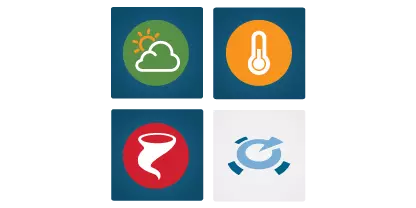
Start today for free
Sign up for a free account now and immediately begin using our weather API to query accurate forecast & historical data for any global location.
In order to get access to our advanced solar energy measures, please sign up for a free account and then request a trial of the advanced solar elements.
